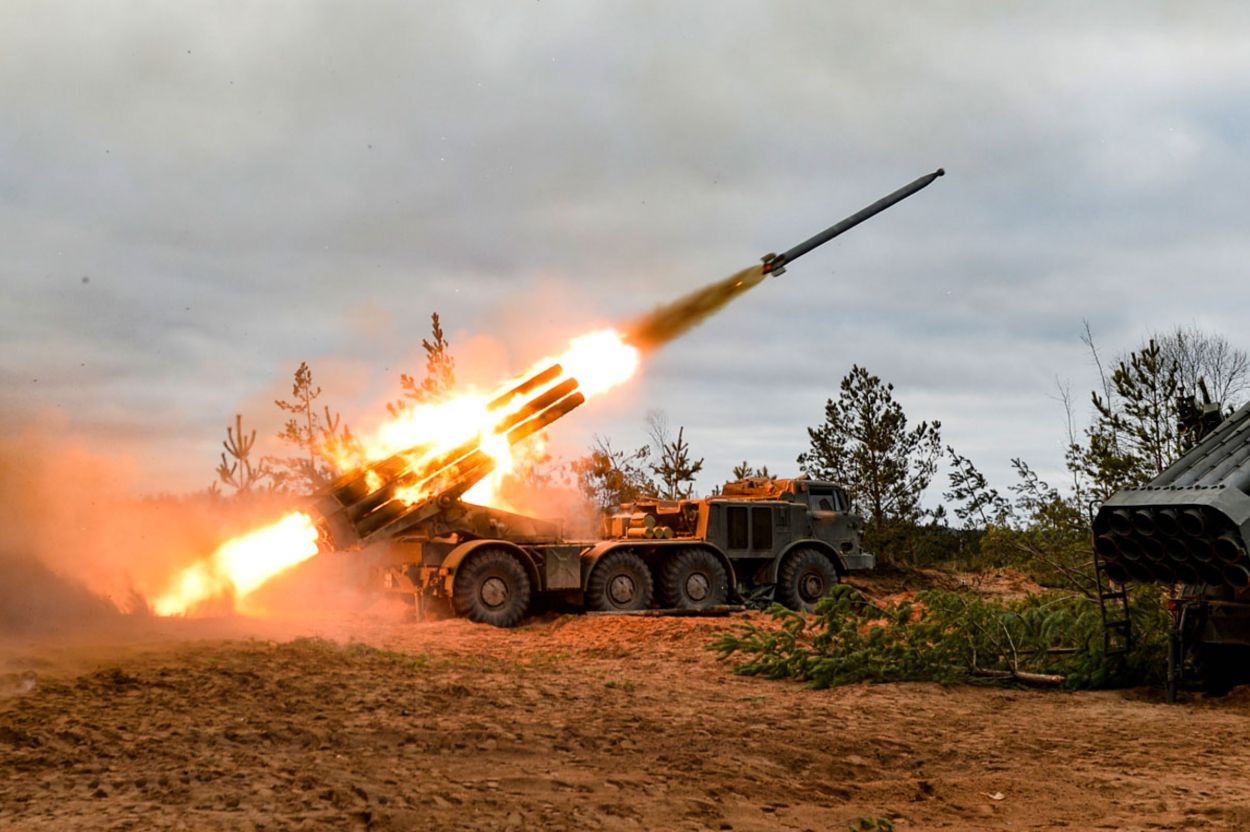Russia is probably rationing shells for use in its war against Ukraine because of the shortage of artillery ammunition, according to a recent assessment by the UK Ministry of Defense (UKMoD).
In an intelligence update published on March 14, the UKMoD said that Russia’s ammunition shortage had worsened significantly, which has impaired the ability of the Russian forces to conduct offensive operations.
“In recent weeks, Russian artillery ammunition shortages have likely worsened to the extent that extremely punitive shelling-rationing is in force on many parts of the front. This has almost certainly been a key reason why no Russian formation has recently been able to generate operationally significantly offensive action,” UKMoD said.
The ministry continued, “Russia has almost certainly already resorted to issuing old munitions stock which was previously categorized as unfit for use.”
The assessment by the UKMoD comes shortly after Oleksiy Danilov, the secretary of the National Security and Defense Council of Ukraine, said that Russia is starting to run low on a stockpile of weapons its military has maintained for decades.
Latest Defence Intelligence update on the situation in Ukraine – 14 March 2023
Find out more about Defence Intelligence's use of language: https://t.co/Z5SI6SOzPY
?? #StandWithUkraine ?? pic.twitter.com/1vOoyWCYYD
— Ministry of Defence ?? (@DefenceHQ) March 14, 2023
Also, of late, the chief of Wagner Group, Yevgeny Prigozhin, has been complaining about the shortage of ammunition for its fighters and warned that if the issue is not resolved, Russia’s positions in the Bakhmut, where Wagner mercenary forces are leading the assault, could be jeopardized.
Reports about the Russian military rationing its artillery shells have been ongoing since the beginning of this year. In January, a CNN report, citing unnamed US and Ukrainian officials, said that the Russian artillery fire in Ukraine has come down dramatically, in some places, by as much as 75%.
However, the estimates of the decline in Russian artillery fire reportedly offered by the US and Ukrainian officials differ widely. The US officials say the rate of Russian fire has dropped from 20,000 rounds per day to around 5,000 on average, while Ukraine estimates that the rate has fallen from 60,000 to 20,000 per day.

Russian Ammunition Stock
The actual state of Russia’s artillery ammunition stocks is not publicly known. However, Hlib Parfonov, a Ukrainian OSINT researcher and head of the security policy at the Doctrine Center for Political Studies in Kyiv, published a two-part article in December 2022 which attempted to estimate Russia’s munition stocks before it invaded Ukraine.
Parfonov gathered financial data of the top Russian defense enterprises that produced ammunition for artillery and divided their revenues between 2014-2021 by the average cost of a single unit of High-Explosive Fragmentation 152-millimeter (mm) ammunition.
Major Russian enterprises that produce ammunition for artillery systems include the Plastmass Plant for artillery shells and the Research Machine-Building Institute, primarily for tank and naval shells, and the development and production of 152mm shells.
The above two enterprises are holdings of Rostec, a Russian state-owned defense conglomerate, and are leading ammunition producers in Russia.

Apart from them, it is also possible that the Verkhne-Udinsk Mechanical Plant, also part of Rostec, may produce a similar range of ammunition. However, Parfonov notes a massive revenue gap between this plant and the two industry leaders. The expansion of production at this plant did not occur until 2022, so it is unlikely that this plant could have produced these munitions at a massive scale.
At the outset, it is essential to note that Parfonov’s analysis is based on many assumptions because of the unavailability of some data.
Such as, it is not possible to ascertain how much of the revenue belonging to the two enterprises could be attributed to the production of ammunition, and that too, in particular, the 152mm shells, which are primarily used by the Russian military in Ukraine.
So, Parfonov’s analysis ignores the 203- and 122-mm ammunition because of the insignificant amount in which they are being employed in Ukraine. Also, the Plastmass Plant and Research Machine Building Institute manufacture a wide range of civilian and military products.
#Harvest party of 152-mm shells from the #Russian #Terrorists. The #UkrainianArmy takes over ready-made-to-fire artillery #shells from fleeing #Russian #artillery positions. The #Ukrainians make sure to immediately send back the #trophies to the positions of the #Russians. pic.twitter.com/7mIq7PVBgJ
— Erik Korsas (@KorsasErik) November 3, 2022
Parfonov makes a bold assumption that the share of 152mm ammunition as part of the total revenue of these enterprises is close to 50 percent while noting that, in reality, the actual share is probably much smaller.
Based on these assumptions, Parfonov estimates that between 2014 and 2021, the Russian defense industry could have produced roughly 3.5 million units of 152mm shells.
However, even this is quite an optimistic assessment since the average cost of a 152mm shell taken for the estimate is that of the cheapest type of projectile – the high-explosive (HE) fragmentation.
- Contact the author at tanmaykadam700@gmail.com
- Follow EurAsian Times on Google News




